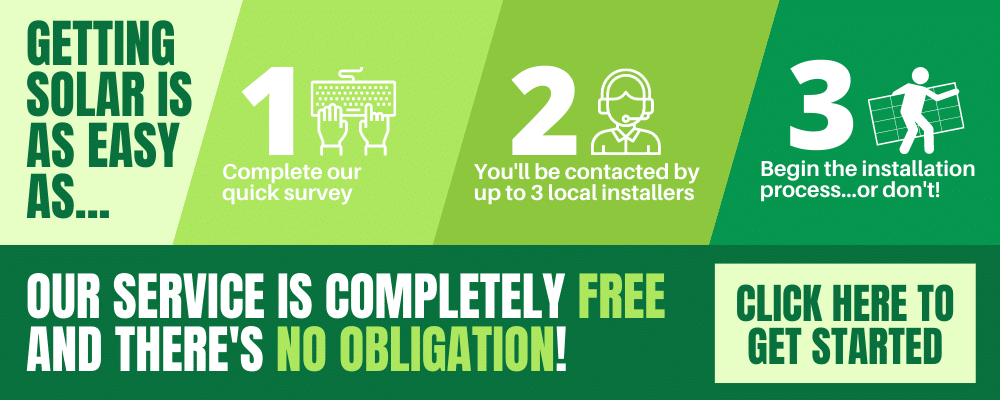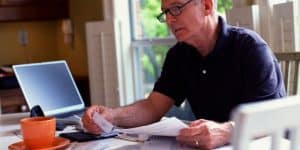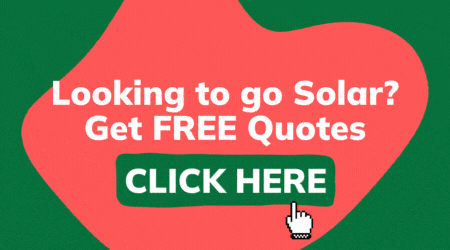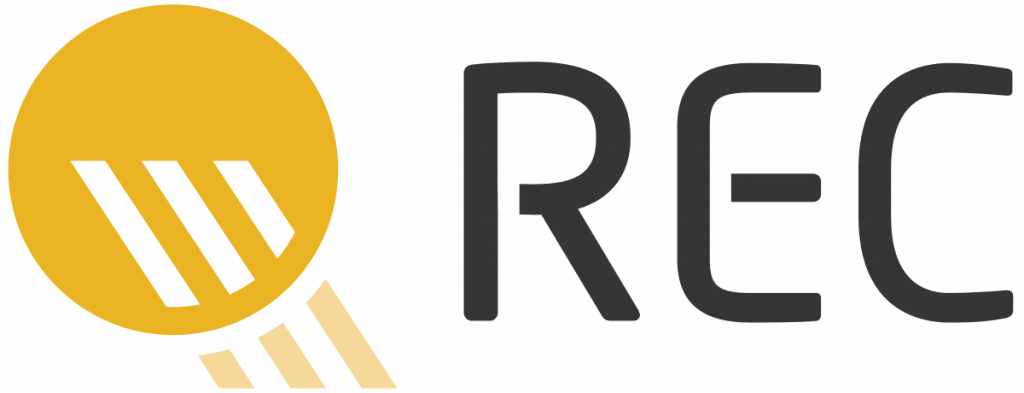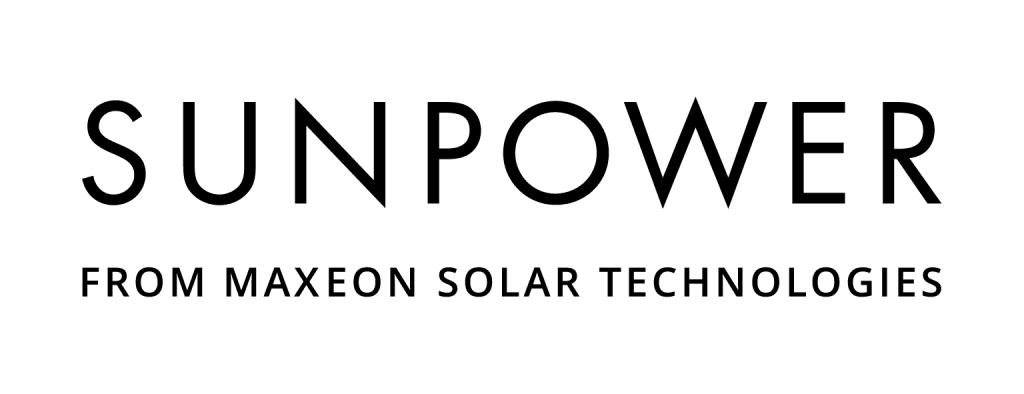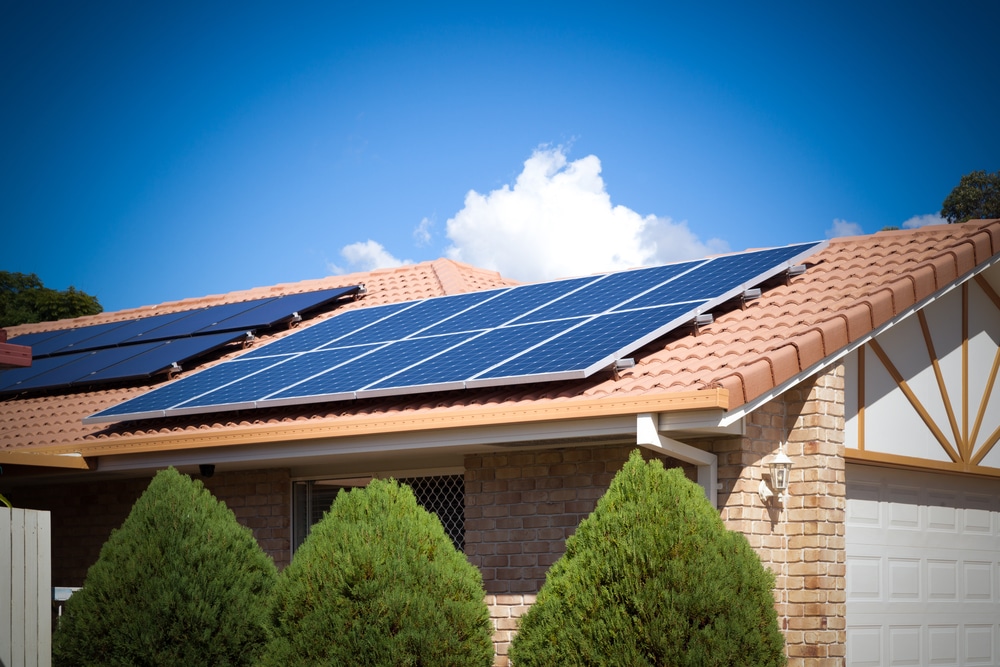
In this page
A solar feed-in tariff or FiT refers to how much you are paid per kWh of electricity when you export excess energy from your solar installation to the grid.
A FiT means that as well as generating your own electricity, you can also earn a small income from it.
As individuals explore the benefits of solar power and its financial implications, considering solar quotes from Energy Matters can provide insights into the potential returns on solar investments.
Understanding the nuances of solar feed-in tariffs and their impact on household finances is a key element in making informed decisions about integrating solar energy into homes and businesses.
FiTs were originally introduced by the government as an incentive to stimulate demand for solar PV systems. As the solar industry has matured and solar panel prices have dropped by almost 80 per cent, FiT rates have reduced considerably.
With current system payback periods typically less than 6 years, any FiT you receive can be considered a bonus and welcome financial sweetener as opposed to a make-or-break factor – but that doesn’t mean you shouldn’t shop around for the best rate.
Below is a guide to FiT schemes and offers by state/territory. We have provided minimum and maximum FiT rates for each state’s major retailers by market share and also for the top 3 retailers offering the highest maximum FiT rates.
Remember, a good solar feed-in tariff is important, but to find the best deal you also need to value usage rates and supply charges. The best way to ensure you are seeing the whole picture and getting the best deal overall is to compare your current energy plan with a range of other offers using our free energy comparison tool.

Victoria Feed-In Tariffs
In Victoria, the Essential Services Commission sets a mandatory minimum feed-in tariff for households.
Feed-in tariffs from 1 July 2023 to 30 June 2024
| FLAT FiT (c/kWh) | TIME-VARYING FiT (c/kWh) | ||
| All times | Option 1 | ||
| Overnight Weekdays: 10pm-7am Weekends: 10pm-7am | Day Weekdays: 7am-3pm, 9pm-10pm Weekends: 7am-10pm | Early Evening Weekdays: 3pm-9pm Weekends: n/a |
|
| 4.9 c/kWh | 11.3 c/kWh | 4.4 c/kWh | 9.3 c/kWh |
| Option 2 | |||
| Shoulder Everyday: 9pm – 10am ; 2pm-4pm | Off-peak Everyday: 10am-2pm | Peak Everyday: 4pm-9pm |
|
| 5.5 c/kWh | 3.9 c/kWh | 10.6 c/kWh |
- The 2023-24 ‘flat rate’ minimum feed-in tariff is 4.9 cents per kilowatt hour: The flat rate feed-in tariff applies regardless of the time of day or day of the week.
- The 2023-24 ‘time-varying’ minimum feed-in tariffs are between 11.3 cents and 3.9 cents per kilowatt hour:
Under option 1, customers are credited between 4.4 cents and 11.3 cents per kilowatt hour of electricity exported, depending on the time of day.
Under option 2, customers are credited between 3.9 cents and 10.6 cents per kilowatt hour of electricity exported, depending on the time of the day.
The tariffs are different for each option as the time blocks are different. The table below has more detail on the different timing blocks.
Feed-in tariffs from 1 July 2022 to 30 June 2023
| Period | Weekday | Weekend | Rate: cents per kilowatt hour (c/kWh) |
|---|---|---|---|
| Overnight | 10 pm to 7 am | 10 pm to 7 am | 7.1 c/kWh |
| Day | 7 am to 3 pm, 9 pm to 10 pm | 7 am to 10 pm | 5.0 c/kWh |
| Early Evening | 3 pm to 9 pm | n/a | 6.9 c/kWh |
Check out our page to learn more about the solar Feed-in Tariff in Victoria.
Victorian electricity retailers are required to offer eligible FiT customers no less than these rates for electricity exported to the grid. Electricity retailers may offer a higher rate than the regulated minimum but are not obligated to do so.
Top 2 Feed-in Tariff VIC
| RETAILERS | MIN SOLAR FiT | MAX SOLAR FiT |
| Origin | 4.9c | 20c (must purchase a solar system through Origin that’s under 7kW) |
| AGL | 4.9c | 15c (for the first 10kWh/day, 4.9c thereafter) |
Feed-in tariff for major VIC retailers
| VIC MAJOR RETAILERS | MIN SOLAR FiT | MAX SOLAR FiT |
| 1st Energy | 4.9c | 9.9c |
| Alinta Energy | 4.9c | 4.9c |
| EnergyAustralia | 5.4c | 12c (for the first 15kWh/day, 5.4c thereafter) |
| Lumo Energy | 4.9c | 5.5c |
| Momentum Energy | 5.4c | 5.4c |
| Red Energy | 4.9c | 7.0c |
| Simply Energy | 4.9c | 11.0c |
| Tango | 4.9c | 4.9c |
Read more about the solar Feed-in Tariff in Victoria
- Who are the DNSPs in Australia?
- Solar power specials for Melbourne and Victoria
- Australian Solar Feed-in Tariffs Information
- Solar Feed-in Tariff Victoria
New South Wales Feed-In Tariffs
There is no set minimum feed-in tariff rate in NSW, although there is a benchmark range of 7.7 to 9.4c/kWh, according to Energy NSW.
Top 3 feed-in tariff NSW
| RETAILERS | MIN SOLAR FiT | MAX SOLAR FiT |
| Simply Energy | 5.5c | 12c |
| EnergyAustralia | 7.6c | 12c (first 15kWh/day, 7.6c thereafter) |
| Origin Energy | 7.0c | 20c (must purchase solar system through Origin that’s under 7kW) |
Feed-in tariff for major NSW retailers
| NSW MAJOR RETAILERS | MIN SOLAR FiT | MAX SOLAR FiT |
| AGL | 5.0c | 15c (for first 10kWh/day, 7c/kWh thereafter) |
| Sumo | 8.0c | 8.1c |
| Alinta Energy | 6.7c | 6.7c |
| Momentum Energy | 0c | 7.0c |
| Dodo | 6.2c | 6.2c |
| Red Energy | 6.0c | 12.0c (first 5kWh/day, 6c thereafter) |
| 1st Energy | 6.0c | 6.0c |
| CovaU Energy | 0c | 5.5c |
Read more about the solar Feed-in Tariff in NSW
- Solar power specials for Sydney and New South
- Australian Solar Feed-in Tariffs Information
- Solar Feed-in Tariff NSW

Queensland Feed-In Tariffs
If you live in South East Queensland, there is no mandated rate for electricity exported to the grid. Instead, electricity retailers offer competitive, market-based tariff rates.
Solar Feed-in Tariff for regional Queensland
Depending on where in the state you live, you may be qualified for one of Queensland’s two primary solar feed-in tariffs.
Regional Queensland
Regional Queensland consumers on the Ergon Energy network have a minimum feed-in tariff rate of 13.441c/kWh, as opposed to Queenslanders who live in the state’s southeast on the Energex network. The Queensland Competition Authority (QCA), a regulatory organisation that monitors retailers’ FiT charges in SEQ, determines these rates.
- Ergon Energy Retail if you’re connected to the Ergon Energy network
- Origin Energy if you’re connected to the Essential Energy network.
Southeast Queensland (SEQ)
Energy retailers in southeast Queensland (SEQ) are not required to adhere to any particular minimum solar feed-in tariff. Because power suppliers will compete for your business by offering a more competitive FiT, it is important to shop around for a plan with a good FiT. Don’t forget to inquire with your energy retailer directly whether there are any special solar-related great deals or offers that may not be provided elsewhere.
Top 3 Feed-in Tariff rates QLD
| RETAILERS | MIN SOALR FiT | MAX SOLAR FiT |
| Origin Energy | 5.0c | 20c (must purchase solar system through Origin that’s under 7kW) |
| AGL | 5.0c | 15.0c (for first 10kWh/day, 5.0c/kWh thereafter) |
| EnergyAustralia | 5.0c | 12.0c (first 15kWh/day, 6.6c thereafter) |
Feed-in Tariff for major QLD retailers
| QLD MAJOR RETAILERS | MIN SOLAR FiT | MAX SOLAR FiT |
| Alinta Energy | 8.0c | 8.0c |
| GloBird Energy | 1.0c | 11c (for the first 8kWh/day, 4c thereafter) |
| OVO Energy | 0c | 8.0c |
| Powershop | 5.0c | 5.0c |
| Red Energy | 1.0c | 8.0c (for the first 5kWh/day) |
| Simply Energy | 5.5c | 7.0c |
| 1st Energy | 6.0c | 6.0c |
Read more about the solar Feed-in Tariff in QLD
- Solar power specials for Brisbane and Queensland
- Australian Solar Feed-in Tariffs Information
- Solar Feed in Tariff QLD
South Australia Feed-In Tariffs
There is no minimum FiT in South Australia. The retailer Feed-in Tariff, which is available to anyone with an eligible solar PV system, is a variable amount offered by retailers. It can change regularly due to influences such as the wholesale price of electricity and market competition.
Top 3 Feed-in Tariff SA
| RETAILERS | MIN SOALR FiT | MAX SOLAR FiT |
| Origin Energy | 6.0c | 20.0c (must purchase a solar system through Origin that’s under 7kW) |
| EnergyAustralia | 8.5c | 12.0c (first 15kWh/day, 8.5c thereafter) |
| 1st Energy | 8.0c | 8.0c |
Feed-in Tariff for major SA retailers
| SA MAJOR RETAILERS | MIN SOLAR FiT | MAX SOLAR FiT |
| AGL | 5.0c | 15c (for first 10kWh/day, 6c/kWh thereafter) |
| OVO Energy | 0c | 12c |
| Alinta Energy | 8.0c | 8.0c |
| Simply Energy | 5.5c | 8c |
| Sumo | 5c | 8c |
| Energy Locals | 6c | 6c |
| Lumo Energy | 3c | 5.5c |
| Red Energy | 3c | 5.5c |
Read more about the solar Feed-in Tariff in SA
- Solar power specials for Adelaide and South
- Australian Solar Feed-in Tariffs Information
- Solar Feed in Tariff SA
Western Australia Feed-in Tariffs
The Western Australian Distributed Energy Buyback Scheme (DEBS) compensates for electricity exported to the grid from qualified solar PV installations, batteries, and electric vehicles.
DEBS offers export payment time. With a greater price paid for electricity exported in the late afternoon and evening when electricity demand and the wholesale cost of electricity are higher, these rates more accurately represent the cost of electricity at different times of the day.
DEBS rates for Synergy customers as of 1 July 2023:
- Peak rates: Electricity exported between 3 pm to 9 pm earns 10 cents per kilowatt-hour (kWh);
- Off-peak rates: Electricity exported between 9 pm and 3 pm earns 2.75 cents per kilowatt-hour (kWh).
DEBS rates for Synergy customers as of 1 July 2022:
- Peak rates: Electricity exported between 3 pm to 9 pm earns 10 cents per kilowatt-hour (kWh);
- Off-peak rates: Electricity exported between 9 pm and 3 pm earns 2.25 cents per kilowatt-hour (kWh).
Read more about the solar Feed-in Tariff in WA
- Solar power specials for Perth and Western Australia
- Australian Solar Feed-in Tariffs Information
- Solar Feed-in Tariff WA
Australian Capital Territory Feed-in Tariffs
Since new applications to the ACT government’s feed-in tariff scheme closed in 2011, FiTs are no longer regulated and are set by retailers. Until recently, strict state regulations meant only a few electricity retailers wanted to operate in the ACT, leaving customers with fairly limited options. Fortunately, more retailers have entered the market allowing customers to shop around for better deals.
Top 3 Feed-in Tariff ACT
| RETAILERS | MIN SOALR FiT | MAX SOLAR FiT |
| Origin Energy | 10c | 20c (must purchase a solar system through Origin that’s under 7kW) |
| ActewAGL | 10c | 15c (for first 15kWh/day, 11c/kWh thereafter) |
| EnergyAustralia | 7.6c | 12c (first 15kWh/day, 7.6c thereafter) |
Feed-in Tariff for major ACT retailers
| ACT MAJOR RETAILERS | MIN SOLAR FiT | MAX SOLAR FiT |
| Energy Locals | 7.1c | 7.1c |
| Amber | 0c | 6.25c (estimated based on wholesale prices) |
| Red Energy | 6.0c | 6.0c |
Read more about the solar Feed-in Tariff in ACT
- Solar power deals for Canberra and the ACT
- Australian Solar Feed-in Tariffs Information
- Solar Feed-in Tariff ACT
Tasmania Feed-in Tariffs
Tasmania has historically had one of the most heavily regulated energy markets in the country. Aurora Energy was the only electricity retailer servicing homes in Tasmania until February 2019, when 1st Energy was permitted to enter the local market. Since then, several more retailers have moved to Tasmania, allowing customers to shop around for better deals.
As of July 2022, a minimum solar feed-in tariff rate was set to 8.883c/kWh in Tasmania.
As of July 2023 – 30 June 2024, the minimum feed-in tariff rate is 10.869 cents per kWh. However, some providers choose to offer more competitive rates than this.
Top Feed-in Tariff TAS
| RETAILERS | MIN SOALR FiT | MAX SOLAR FiT |
| 1ST Energy | 10.87c | 12.0c |
| Aurora Energy | 10.87c | 10.87c |
Feed-in Tariff for major TAS retailers
| SA MAJOR RETAILERS | MIN SOLAR FiT | MAX SOLAR FiT |
| Energy Locals | 10.87c | 10.87c |
| CovaU Energy | 10.87c | 10.87c |
Read more about the solar Feed-in Tariff in TAS
- Solar power specials for Hobart, Launceston and Tasmania
- Australian Solar Feed-in Tariffs Information
- Solar Feed-in Tariff Tasmania
Northern Territory Feed-in Tariffs
Jacana Energy and Rimfire Energy are the only providers offering solar feed-in tariffs in the Northern Territory.
The biggest non-government electricity supplier in the Northern Territory is called Rimfire Energy Electricity. The government owns Jacana Energy, which provides service to most residential customers in Darwin and the surrounding areas.
- Jacana Energy: The standard feed-in tariff is 9.13 cents per kilowatt hour (incl. GST) for residential and business customers.
- Rimfire Energy: The feed-in tariff is 12.1 cents per kilowatt hour (incl. GST) for residential and business customers. This is higher than the standard feed-in tariff offered by Jacana Energy.
“Premium” Feed-in Tariff
The premium feed-in tariff for residential users is 28.1117 cents per kilowatt hour (including GST).
As of July 1, 2022, customers on the Premium feed-in tariff for four years or more will transfer to the Standard feed-in tariff, which is 9.13 cents per kilowatt hour inclusive of GST.
Read more about solar Feed-in Tariff in Northern Territory
- Solar power specials for Darwin and Northern Territory
- Australian Solar Feed-in Tariffs Information
- Solar Feed in Tariff NT
Do solar panels need cleaning?
Australia is known for its diverse climates, ranging from arid regions to coastal areas with higher humidity levels. These environmental factors play a role in determining the extent to which solar panels require cleaning. In regions with higher levels of rainfall or near the coast where salt spray is prevalent, solar panels are more likely to self-clean to a certain degree. Rainwater helps rinse off dust, pollen, and other debris that may accumulate on the panel’s surface. However, in areas with low rainfall or heavy dust and dirt accumulation, manual cleaning may be necessary.
While the self-cleaning properties of rainwater can reduce the need for regular maintenance in some areas, it is important to note that solar panels can still accumulate stubborn dirt, bird droppings, or other contaminants that may hinder their performance. Dust particles and grime can form a layer over the panel, reducing the amount of sunlight absorbed and subsequently lowering energy production.
Additionally, bird droppings can create shading, leading to localised hotspots that can damage the panel’s cells.
Therefore, periodic cleaning is recommended, especially in regions with dry climates or areas prone to heavy soiling.
Read more about cleaning solar panels
- Cleaning Solar Panels: Why, When, and How You Should Do It
- Tips for Cleaning Solar Panels
- Are Dirty Solar Panels Less Efficient And Do They Need Maintenance?
- The importance of cleaning your solar panels
- Solar Panels Maintenance
UPDATED JANUARY 2024








